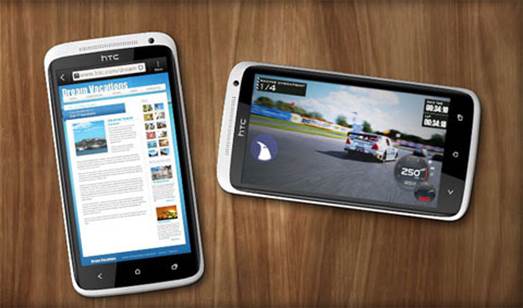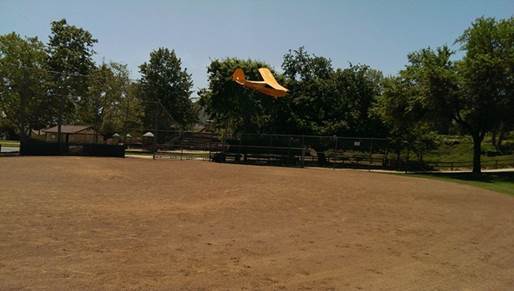Camera
In the days before releasing the One, HTC
promised a totally new imaging and sound experience on its high-end phones -
and of course it was not overstating. Also with the exception of Nokia with its
PureView series, all of the competitors of the company are busy increasing the
number of MP on their latest and greatest cameras. However, HTC has the courage
to go the opposite direction: it dropped down the resolution to 4MP. As you
would wait, there are many things other than a simple reduction in the number
of pixels - in fact, HTC invented the term UltraPixels to describe its new
imaging innovation.

HTC
has also improved a next-generation image signal processor (ISP), ImageChip 2.
Regardless of a lower number of megapixels, the new chip can continuously
autofocus in less than 200ms, noise reduction, lens compensation in real time
and 1080p HDR video recording.
The idea behind the UltraPixels is to get a
physically large sensor and combine it with the large pixels that can gather
more light than the standard-sized pixels. While the typical smartphone cameras
have 1.1μm, the One proudly shows off a one-third-inch BSI sensor with 2µm
pixels that can absorb more than 330 percent more photons. But that alone is
not sufficient to excel in low-light photography, so HTC also uses a 28mm f/2.0
AF lens and optical image stabilization (OIS) - and in case you still are
unable to shoot enough light, an LED flash is included for the right reason.
HTC has also improved a next-generation
image signal processor (ISP), ImageChip 2. Regardless of a lower number of
megapixels, the new chip can continuously autofocus in less than 200ms, noise
reduction, lens compensation in real time and 1080p HDR video recording. In
other words, there is no need to worry about the resolution on the camera -
instead, let the images speak themselves.
The front-facing camera has also not
abandoned. The 2.1MP module accompanies with an f/2.0 wide-angle (88-degree)
lens and can record up to 1080p video, much like its sibling on the back of the
One. Although it cannot perform the same interesting scene modes (for video or
images) as the rear camera, at least you can shoot HDR and change the white
balance if necessary.

The
front-facing camera has also not abandoned. The 2.1MP module accompanies with
an f/2.0 wide-angle (88-degree) lens and can record up to 1080p video.
All in all, all of the settings can be
normally customized are present: white balance, ISO up to 1600, exposure
control, HDR, face detection, a specific macro mode, panorama, three types of
crop, a lot of filters and a post-shot photo editor. There is a clever UI skill
that allows you to switch between front and rear cameras by dragging your
finger down from one of the phone’s sides. The only thing that is quite
regrettably missing is the ability to touch and hold the shutter button on the
screen to lock focus and exposure, even when the burst shooting mode of the One
is disabled.
When talking about performance, there are
many places we can start, so we'll start by discussing the megapixel myth.
Naturally, it is easy to think that a camera with lower resolution is worse
than one that can capture a bigger number of pixels, but this is not always
true. Indeed, the cameras with higher resolutions make cropping and digital
zooming better. However, when images are viewed at the normal sizes, there is
not any down gradation of detail that is able to be recognized easily. The
colors are extremely natural, and white balance is also excellent. The only
problem we found with the images was that the camera usually overexposed
subjects in direct sunlight.
The One’s camera really shines almost
everything else in low light situations. It usually gives better images at
night than the Nokia Lumia 920, and stands in the second position only behind
the current imaging king, the Nokia 808 PureView. We were surprised by how much
errant light it collected; the One was able to capture the images that were
perfectly usable on the ink-dark street, and the OIS worked like a miracle. The
only time noise really turned into a problem was in extremely dark scenarios,
but on the other hand we were rather impressed by how clear most of the images
were taken.

A
sample shot of the One; the One’s camera really shines almost everything else
in low light situations.
In summary, although it is not perfect and
we want to have more detail from the enlarged images, the One’s UltraPixels
method seems to be completely good. In fact, we are quite confident about its
quality to declare the One’s camera as our new favorite.
In terms of video, there are many things to
help you to be busy. Because ImageChip 2 can record 1080p video at about 30 fps
and 720p at 60 fps (this also includes HDR function), you can try these options
at any time, in addition to HTC’s specific slow-motion mode. We have compiled
the video samples from each of the above modes for you to test. In our One-time
use, the daytime videos were not only fast and smooth visually, the One’s noise
reduction mics were also great in filtering out the air and other unwanted
background noise while collecting our own voices very well simultaneously. HDR
videos are quite good, but sometimes we found the strange artifacts on some
frames, while brightness occasionally jumps. Video recording was quite clear at
night, although the frame rate seemed to be affected, dropping down from 30fps
to about 20fps, and there were also slightly minor problems with white balance.
As if the UltraPixels camera is not enough to
show that images play a big role in HTC’s strategy to attain market share, it
has also introduced one unique feature named Zoe. When looking at it, it's hard
not to imagine an old-fashioned zoetrope rotating around and around to produce
a short movie. This feature may take 4 to 5 full-resolution images per second
while recording a few seconds of 1080p video. Finally, what you have is a short
video segment and approximately 20 pictures - think of the moving pictures in Harry
Potter, and you will know the idea. On the surface, it seems that it would
not have any practical use, but we began to appreciate it as soon as we saw the
cartoon images appear in our photo gallery. Once we saw the highlight reels and
Zoe Share, we completely defeated. We will talk more these features in the next
section.